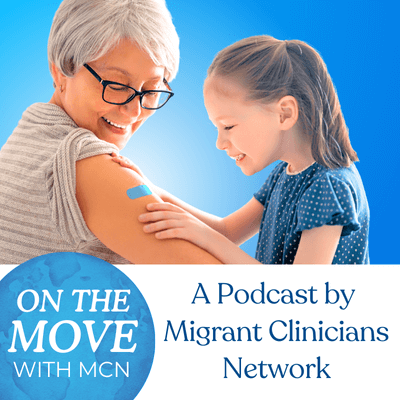Empowering Communities, One Hyperlocal Campaign at a Time: My Experience Presenting at the East Coast Migrant Stream Forum

MCN's Renée AboAmshe presents at the East Coast Migrant Stream Forum.
Presenting at a conference can be a nerve-wracking experience, but it can also be incredibly rewarding. I recently had the opportunity to present at the East Coast Migrant Stream Forum in Orlando, Florida on behalf of Migrant Clinicians Network. The 35th annual Stream Forum brought together regional partners focused on reducing health disparities, increasing access to care, and bettering the health and well-being of migrant and seasonal agricultural workers.
Health teams rarely have expertise in developing hyperlocal campaigns that are culturally appropriate, to effectively reach their migrant and seasonal agricultural worker communities. This was particularly evident during the peak of the COVID crisis. MCN built effective and replicable resources during the crisis that can now be used for the ongoing COVID crisis or other public health emergencies -- so Renée AboAmshe, MHA, LPN, CHES, MCN’s Program Manager of the Eastern Region Office and I presented on "Capacity-Building to Empower Community-Based Response among Vulnerable Populations during Current and Future Public Health Emergencies."

The centerpiece of MCN’s resources for organizing for any health concern is our "Designing Community-Based Communications Campaigns” manual. We used this as a basis for our presentation and guided participants through the process of creating effective campaigns while considering the real needs of migrant worker communities.
The breakout session was a highlight of our presentation, as it allowed participants to put into practice the skills learned during the presentation to develop their own hyperlocal campaign. While it was a huge task to bring in real-world conditions to a three-hour seminar, our team was up to the task in the creation of our interactive breakout session. We conducted two case studies, one on COVID-19 and the other on diabetes, to give participants a practical understanding of the process. To add real-world conditions, a fake needs assessment was also developed for each group to help guide their goals and objectives to meet the needs of their fictional community as well as a hand-selected resource to aid in the success of their campaign. The breakout session was tailored to the specific needs of each community, and the diverse experiences and skills of each group were brought together to create unique and effective campaigns. Participants shared not only their successes but also their challenges and limitations in developing effective campaigns based on their professional and personal experiences. Some participants noted the increased need and limited availability of culturally and linguistically appropriate educational resources and limited internal and external resources in each of their communities. Others were able to exchange strategies they used to reach their communities, such as partnering with employers, faith-based institutions, and community organizations to disseminate information in a way that is accessible for their populations.

The feedback from the session was highly positive. Luckily for those who missed it, the materials are available for you to design your own campaign for a segment of your community who needs help for any health concern, from hunger, to kidney disease, to influenza.
The 58-page manual is available in English and Spanish – a unique and highly recommended resource for your health team: Designing Community-Based Communications Campaigns
The process can feel overwhelming at first – but these documents, used during the conference or pulled out from the manual, break down the process into manageable steps, and give you some insight into how the process may go in your community:
- Example of a Summary of a Needs Assessment: After going through the process of creating a needs assessment, organizing the data, and analyzing, you can summarize your needs assessment. Here’s an example summary that we used as a case study during the conference.
- Rapid Needs Assessment, Summary, and Analysis Template: Start with building a needs assessment for your community.
- Work Plan Template: Develop a work plan based on your needs assessment.
- Designing Community-Based Communication Campaigns Manual: Access the entire manual in English or Spanish.
- COVID-19 Vaccine Education Materials: Tools for Implementation: This page includes additional campaign materials (also pulled from the manual) that may be useful.
- Log in to post comments






